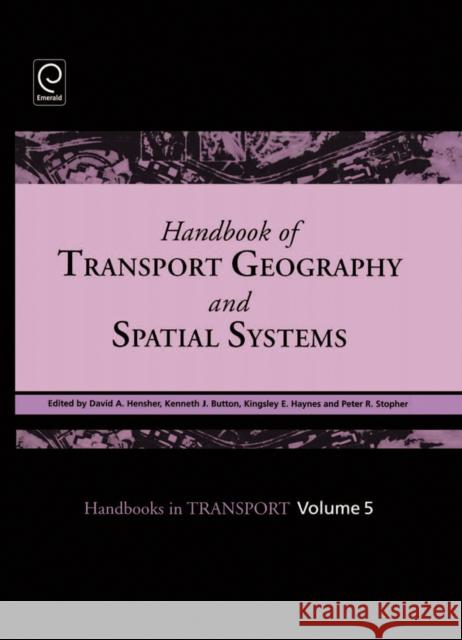Handbook of Transport Geography and Spatial Systems » książka
Handbook of Transport Geography and Spatial Systems
ISBN-13: 9780080441085 / Angielski / Twarda / 2004 / 694 str.
Transport systems, the vital arteries of modern societies and economies, shape our world and are shaped by it. The subject of this volume is the dynamic interactions between transport and the physical, economic, and human geographies it weaves through. Transport plays a central role in economic development and growth. It profoundly affects the socio-economic characteristics and spatial form of urban centres and rural areas alike. A new transport link can bring increases in population, in employment, in industrial activity, in wealth. In turn, these changes can lead to demands for further transport improvements. All these factors are explored in the section on Transport and Spatial Form. Sections on Land-use/Transportation Modelling and Data then discuss how to obtain appropriate data and model these transport-geographic phenomena. The past decade has seen substantial research efforts devoted to improving transport modelling techniques, and the state of the art is described here. GIS and GPS are powerful technologies with a wide range of potential applications in this field, in which great advances have been made in recent years. Each therefore has a whole section devoted to it, both to established applications and to those yet to be fully exploited. While all these and the section on Network Analysis may be regarded as core areas, topics on the frontiers are also covered in this comprehensive volume, with sections on Spatial Cognition, GeoSimulation, and Time Use. Each chapter was specially commissioned from an acknowledged world expert on its topic. Each offers an overview and useful insights to those familiar with the area as well as those new to it. Systematic and thorough in its creation, current and accessible in its content, and authoritative and international in its authorship, the "Handbook of Transport Geography and Spatial Systems" will be the definitive reference work on this important subject.











